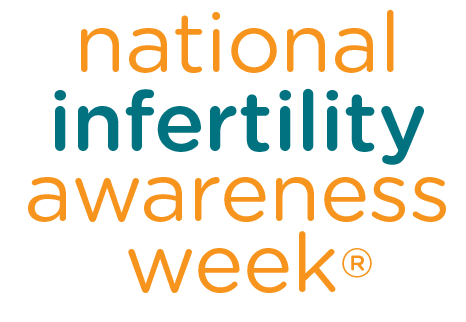Financially Preparing for Parenthood and Fertility Treatments

For any parent-to-be, finances are often at the forefront of their mind. After all, finances impact most decisions. From diapers to daycare, and unexpected expenses like a living room piled with baby gear, anyone knows infant costs can quickly add up. But when you add fertility treatments into the mix before welcoming home a baby, the process may seem financially overwhelming. Financial planning can help create a system for saving and factoring in costs down the line, helping you feel prepared and ready for any surprises that come your way.
How to Get Started
Before making any major financial decisions, it can be helpful to start by taking a close look at your current finances. Get a clear picture of your income, savings, debt, and monthly expenses. While everyone knows their salary, not everyone knows where their income goes at the end of each month. Understanding where your money travels after it lands in your account can help you identify areas to cut back or save toward baby-related costs.
Planning for Fertility Treatments
Unlike the cost of a baby, it can be difficult to know exactly how much you’ll need for fertility treatments. There is no standard framework to compare yourself to because the costs can differ for everyone depending on how many tries, and which services someone utilizes. Let’s take a look at the cost of services, and the averages people pay to help understand how much you might need.
For donor sperm, the cost of vials differs based on factors like shipping or the preparation type. At Fairfax Cryobank, people can expect to pay between $1000 to $1800 per vial. One vial is one try. How much sperm someone will need varies from person to person but most require multiple vials.
For many, fertility treatments such as in vitro fertilization (IVF) are part of the journey to parenthood. IVF medications alone can cost $3,000 to $7,000 per cycle. IVF can be expensive, with costs ranging from $12,000 to $25,000 per round, excluding medications. The average person goes through two to three rounds of IVF to become pregnant. Often, other costs accompany fertility treatments, such as embryo freezing, which is $45 a month.
Create a Budget
Once you have a clear picture of your finances, create a budget that includes anticipated baby or fertility treatment expenses. Some items to include are the following:
- Fertility medicine
- Fertility specialist appointments
- IVF costs
- Donor sperm costs
- Embryo freezing costs
- Prenatal costs
- Delivery and hospital costs
- Baby essentials like a crib, car seat, and diapers
- Childcare costs such as a nanny or daycare
- Future savings for your baby
Build Your Emergency Fund
If fertility treatments are in your plans, consider setting up a dedicated savings fund. Both fertility treatments and life with a newborn are unpredictable, and having an emergency fund can provide peace of mind. Aim to save at least three to six months’ worth of living expenses in a separate savings account. This fund can be a financial safety net for continuing fertility treatments, job changes, or other emergencies.
Instead of keeping your emergency fund in a checking account or traditional savings account, high-yield savings accounts offer a higher interest rate, usually around 4%. This means that if you have $20,000 saved, it would generate $800 worth of interest in a year, as opposed to a traditional savings account, which on average offers a .41% return or $82 in interest on $20,000.
Know Your Policy
Not all health insurance covers fertility treatments, however, some do. Knowing your policy ahead of time can help you plan how much you’ll pay for out-of-pocket costs.
Aside from learning which fertility treatments are covered, you’ll want to know what your plan includes for your pregnancy and baby. Review your health insurance policy to understand prenatal care, delivery, and pediatric coverage. If your current plan isn’t sufficient, explore options through your employer or private insurers to ensure adequate coverage for both parent and baby.
Explore Your Options
While the cost of fertility treatments and an infant might seem unfeasible at first glance, you’re not without options. There are several grants and financing resources for your future.
- Flexible Spending Accounts (FSA) and Health Savings Accounts (HSA): These tax-advantaged accounts can help cover medical expenses, including fertility treatments and prenatal care.
- Employer Benefits: Many companies offer paid parental leave, and some offer fertility treatments.
- Personal Loans and Financing Plans: Many fertility clinics provide payment plans or financing options to help manage treatment costs over time so you don’t need to have everything saved before starting treatments.
- Government Assistance: It’s important to note that only two states cover fertility treatments through Medicaid programs. However, depending on your financial situation, programs like WIC (Women, Infants, and Children) or Medicaid may assist with pregnancy and newborn expenses.
Fertility Specific Loans
Fertility-specific loans provide financing options for couples undergoing treatments such as IVF, egg freezing, or surrogacy. Many lenders specialize in medical loans tailored to fertility care, offering competitive interest rates and flexible repayment terms. Companies such as CapexMD, and Future Family provide financing plans designed to cover all aspects of fertility treatments, including medications and lab fees.
Before committing to a loan, compare interest rates, repayment schedules, and any hidden fees to ensure you choose the best option. A fertility-specific loan can help spread out costs over time, making treatments more accessible while easing the immediate financial burden.
Crowdfunding
It takes a village to make and support a baby, and crowdfunding is one way to help the dream come to fruition. Platforms like GoFundMe or Kickstarter allow people to share their fertility journey and request financial contributions from family, friends, and kind strangers. When creating a crowdfunding campaign, it’s essential to be transparent about the costs, treatment requirements, and emotional journey to encourage support. Adding a compelling story and photos can help boost donations.
If you feel unsure where to start with financial planning, consider consulting a project-based financial adviser. Whether you’re planning for fertility care or bringing a baby home, there are options to help you get started. Financial planning can set you and your family up for success.






